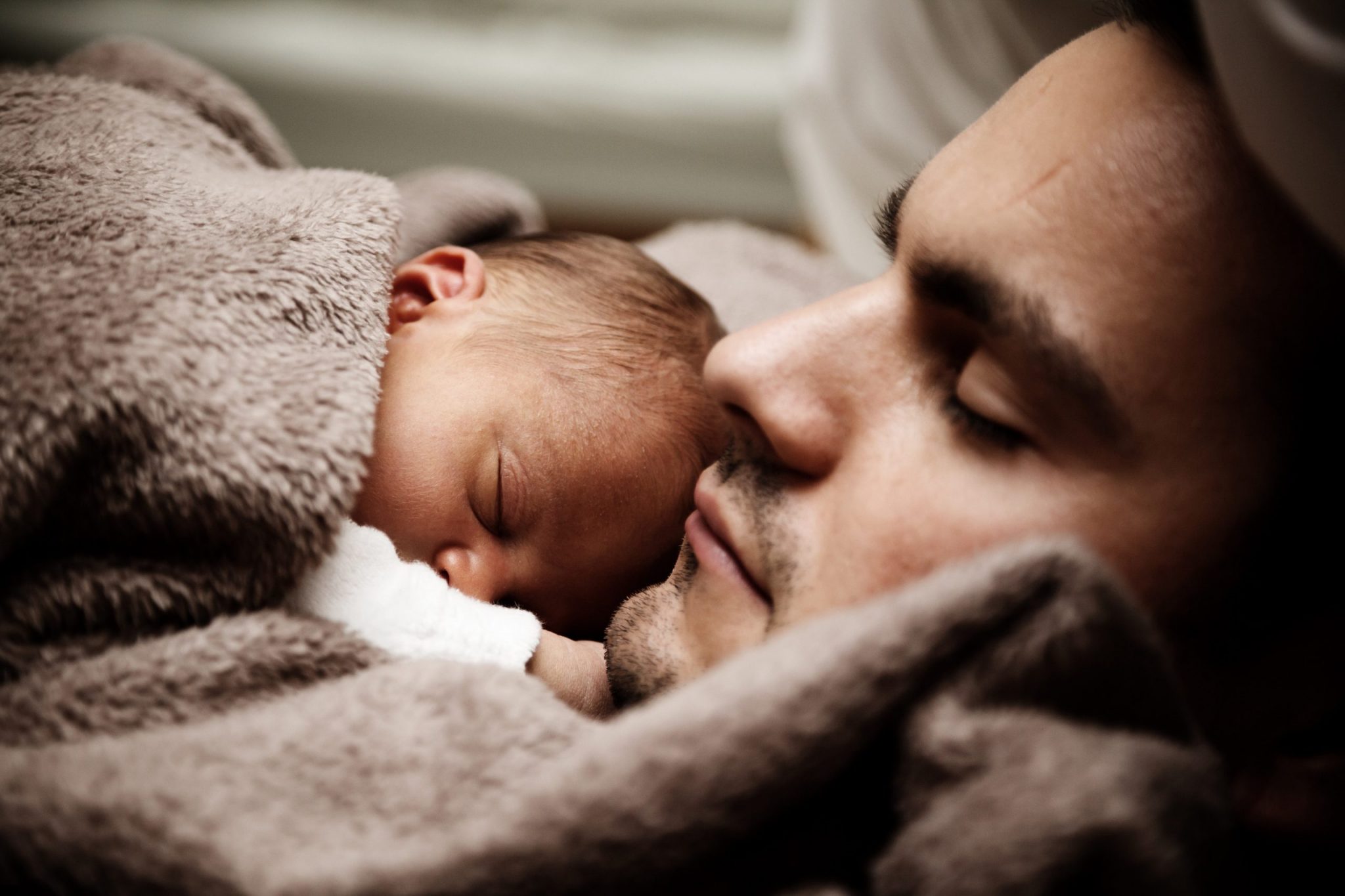Sleep: it’s the one thing new parents crave and babies seem determined to resist. If you’re reading this, chances are you’ve experienced those late-night struggles—the endless rocking, the lullabies on repeat, and the desperate prayers for just a few hours of uninterrupted rest. You’re not alone.
Sleep training is a topic that sparks endless debate among parents. Some swear by it, while others shy away from the idea, fearing it might be too harsh. But here’s the thing: there’s no one-size-fits-all approach, and sleep training doesn’t have to be about tears (for you or your baby). It’s about helping your little one learn the skills they need to fall asleep independently—a gift that benefits the whole family.
So let’s explore some of the most effective sleep training methods. Whether you’re curious about the “Cry It Out” approach, want to try the gentler “Pick Up, Put Down” technique, or need something flexible like “Bedtime Fading,” we’ll get into each one. By the end, you’ll have the tools and confidence to choose a sleep training method that suits your baby and your family’s unique needs.
Remember: there’s no “right” way to do sleep training—only the way that works for you. Let’s dive into the world of sleep training methods and find a path to peaceful nights and well-rested mornings!
Why Is Sleep Training Important?
Sleep training isn’t just about getting your baby to sleep through the night—it’s about laying the foundation for healthy sleep habits that will benefit them (and you) for years to come. Babies thrive on routine, and teach them how to self-soothe and fall asleep independently is a vital part of their development.
Without sleep training, many parents fall into the trap of sleepless cycles—rocking, nursing, or holding their baby until they fall asleep, only to repeat the process multiple times a night. Sleep training breaks this cycle by giving your baby the tools to self-soothe and fall back asleep on their own.
Let’s be honest—parenting is hard enough without the added stress of sleepless nights . Sleep training can give you back those precious hours of rest, helping you recharge and show up as the best version of yourself for your baby. It can also strengthen your relationship with your partner by reducing tension and giving you both a chance to unwind together in the evenings.
And most importantly, good sleep is essential for your baby’s growth and brain development. Research has shown that sufficient sleep is crucial for a baby’s brain development. During sleep, babies process the day’s experiences, solidify memories, and develop critical cognitive skills.
A well-rested baby is generally happier, more alert, and better equipped to learn new skills. Sleep training can also help regulate their circadian rhythm, setting them up for a lifetime of healthy sleep patterns.
ALSO READ: How Sleep Monitoring Supports Brain Development In Babies
Sleep Training Methods & How They Work
When it comes to sleep training, there’s no one-size-fits-all approach. Every baby is different, and finding the right method for your family may take some trial and error. Below, we’ve outlined some of the most popular sleep training methods to help you decide what works best for your baby.
Cry it Out (CIO) Method
The Cry it Out method is often seen as the toughest approach to sleep training, and it’s one of the reasons many parents feel hesitant about the concept. This method involves letting your baby cry until they fall asleep on their own without any intervention from you.
In its most extreme form, CIO means placing your baby in their crib after meeting all their needs (feeding, diaper change, etc.) and not returning to them until the morning. However, many experts caution against this strict approach, as it can be emotionally challenging for both parents and babies.
If you’re considering Cry it Out, it would be helpful to make use of baby monitors that can make the process easier. If you can see your baby and talk to them through a baby cam , it can ease the process.
But, that there are gentler variations available that we discuss next.
Ferber Method
A gentler alternative to the CIO method, the Ferber Method involves checking on your baby at gradually increasing intervals. This reassures your baby that you’re nearby while still encouraging them to self-soothe.
Here’s how it works:
- On the first night, check on your baby after 3 minutes of crying, then 5 minutes, and then 10 minutes.
- Each subsequent night extends the intervals by a minute or two.
The key is to keep your interactions brief and avoid picking up your baby or offering too much comfort. By gradually reducing your presence, you’re teaching your baby to fall asleep independently over time.
Controlled Crying Method
Similar to the Ferber Method, Controlled Crying also involves checking on your baby at intervals. However, the difference lies in the level of comfort you provide during these check-ins. With Controlled Crying, you can soothe your baby—by patting them, shushing, or speaking gently—before leaving the room again.
To put your mind at ease, a 2016 study published in Pediatrics found that controlled crying methods do not cause long-term emotional harm. Babies who underwent sleep training showed no differences in emotional well-being compared to those who didn’t.
This method is ideal for parents who want to strike a balance between offering reassurance and promoting self-soothing.
Chair Method
The Chair Method is a more gradual approach to sleep training that requires patience and consistency. With the chair method of sleep training, you will be sitting on the chair near to your baby’s crib but you won’t pick them up.
- Place a chair near your baby’s crib and sit with them as they fall asleep.
- Each night, move the chair slightly further away from the crib until you’re no longer in the room.
While this method can be effective, it may not work for babies who become distressed when they see you but can’t reach you. Additionally, some babies may wake up during the night and cry for you, making the process longer.
Pick Up, Put Down Method
The Pick Up, Put Down Method is one of the gentlest sleep training methods available. When your baby cries, you pick them up, soothe them until they’re calm, and then place them back in the crib.
This process may need to be repeated several times throughout the night, so it requires a great deal of patience. While it’s a slower approach, it’s perfect for parents who want to minimize crying as much as possible during sleep training.
A 2020 review in the Journal of Developmental & Behavioral Pediatrics emphasizes that sleep training success often depends on matching the method to a child’s temperament. Babies with a more sensitive temperament might respond better to gentler methods like the Pick Up, Put Down approach.
Bedtime Fading Method
If your baby resists bedtime or cries extensively before falling asleep, the Bedtime Fading method could be a great fit. This method involves gradually adjusting your baby’s bedtime to align with their natural sleep cues.
Here’s how to do it:
- Start by observing your baby’s sleep cues, such as rubbing their eyes, yawning, or fussiness.
- When your baby seems tired, put them in their crib. If they cry, take them out for a set amount of time (eg, 30 minutes) and try again.
- Each night, move bedtime 15 minutes earlier until your baby is falling asleep at your desired time.
This method helps align your baby’s circadian rhythm with their bedtime, making it easier for them to fall asleep without fuss. Sleep training works in tandem with a baby’s natural circadian rhythms. Establishing consistent bedtimes and routines helps align their internal clock, leading to better sleep outcomes.
ALSO READ: Sleep Problems In Children With Special Needs
Sleep Training FAQs Answered
We’ve answered a few frequently asked questions by parents regarding sleep training below:
1. What is the ideal age to start sleep training?
Sleep training typically starts between 4-6 months when babies are developmentally ready to self-soothe. However, every baby is different, so consult your pediatrician for personalized advice.
2. Will sleep training harm my baby emotionally?
Research shows that properly conducted sleep training does not harm a baby’s emotional development. It can promote better sleep for both the baby and the parents, improving overall well-being.
3. Can I sleep train my baby while breastfeeding?
Yes, you can sleep train while breastfeeding. Just ensure your baby gets enough nourishment during the day to reduce the need for night feedings.
4. How long does sleep training take?
The duration varies depending on the method and your baby’s temperament. Some methods show results within a few days, while others might take a few weeks.
5. What if my baby wakes up during the night?
Night wakings are normal. Stick to your chosen sleep training method to encourage your baby to fall back asleep independently.
6. Should I let my baby cry during sleep training?
This depends on the method you choose. Some involve periods of crying, while others focus on minimal tears. Pick a method that aligns with your comfort level and parenting style.
7. Can sleep training work for older babies or toddlers?
Yes, sleep training can be effective for older babies and toddlers. The approach might need to be adjusted for their age and habits.
8. What if sleep training doesn’t work?
If you don’t see progress after consistent efforts, consider seeking help from a pediatrician or sleep consultant to identify potential issues.
ALSO READ: 8 Tips to Help Your Baby Self-Soothe to Sleep
Tips for Successful Sleep Training
Sleep training can feel like a daunting journey, but with the right strategies and mindset, it’s absolutely achievable. To set yourself and your baby up for success, keep these tips in mind:
Choose the Right Time
Timing is everything when it comes to sleep training. Avoid starting during major transitions, like moving homes, teething, or developmental leaps. Babies thrive on routine, so pick a time when life feels relatively calm and consistent for your family.
Be Consistent
Consistency is the cornerstone of effective sleep training. Once you choose a method, stick with it. Switching approaches mid-process can confuse your baby and delay progress. It’s okay if some nights feel harder than others—stay the course, and you’ll see the results.
Establish a Bedtime Routine
A predictable bedtime routine signals to your baby that it’s time to wind down. Activities like a warm bath, gentle massage, storytime, or a lullaby create a calming environment and help your baby transition to sleep mode.
Watch for Sleep Cues
Pay attention to your baby’s sleep cues, such as yawning, rubbing their eyes, or becoming fussy. Putting them to bed at the right time can prevent overtiredness, which often makes it harder for them to fall asleep.
Create a Sleep-Friendly Environment
Ensure your baby’s sleep space is conducive to rest. A dark, quiet room with a comfortable temperature can make a world of difference. Consider using blackout curtains and a white noise machine to block out distractions.
Manage Your Expectations
Remember, sleep training is a process, not an overnight fix. Some babies take a few days to adjust, while others may need a couple of weeks. Celebrate small victories, and don’t be too hard on yourself if progress feels slow.
Involve Your Partner or Caregivers
If you have a partner or a caregiver who’s actively involved in your baby’s bedtime routine, make sure they’re on the same page about the sleep training method you’ve chosen. A unified approach ensures consistency and makes the process smoother for everyone.
Stay Calm and Patient
Sleep training can test your patience, especially during tough nights. Remember that your baby is learning a new skill, and crying is their way of communicating. Stay calm, offer reinsurance when needed, and trust the process.
Be Flexible When Necessary
Life happens, and it’s okay to adjust your approach if something isn’t working. The goal is to find a method that suits your baby’s temperament and your family’s needs.
Celebrate Success
Every small step towards independent sleep is a victory worth celebrating! Whether it’s your baby sleeping for a longer stretch or going down with fewer tears, take a moment to acknowledge your progress.
Parents who implement successful sleep training often report reduced stress levels and improved mental health. Quality sleep for babies means better sleep for parents, strengthening family bonds and overall happiness.
Remember, there’s no “perfect” way to do it. Celebrate small wins, trust your instincts, and don’t hesitate to ask for help if you need it. Sleep training is just one step in the incredible adventure of parenting, and it’s okay to go at your own pace.
You’ve got this!










